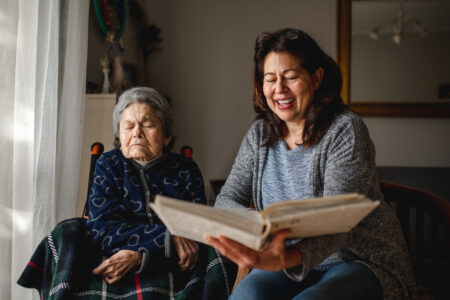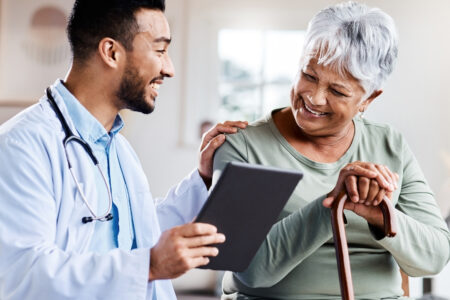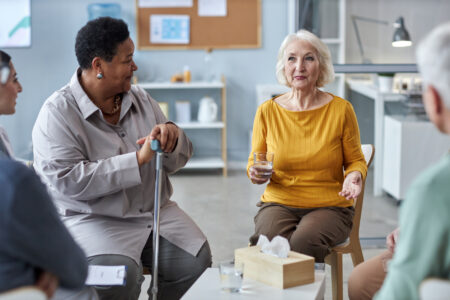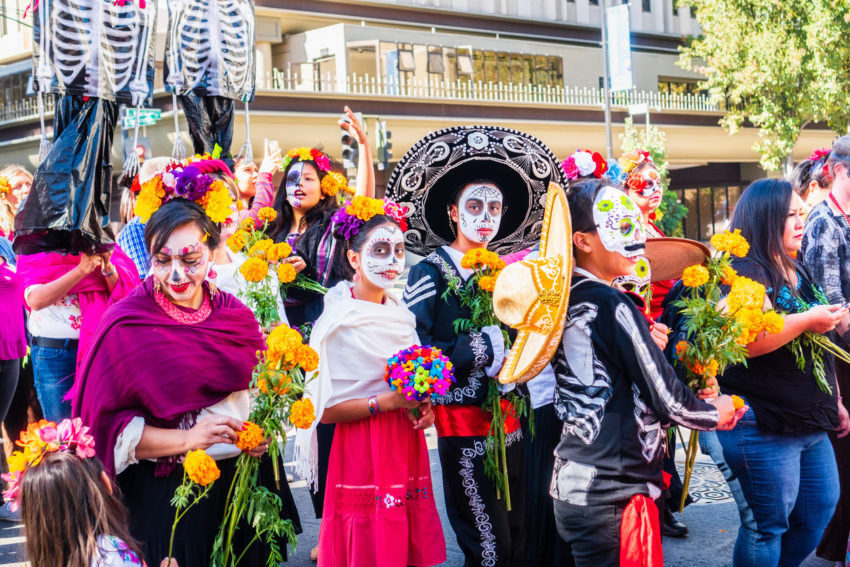
Share On Social!
Día de los Muertos, also known as Day of the Dead, is a lively annual Mexican holiday that celebrates friends and family members who have passed away.
Characterized by vibrant parades, singing, traditional dress and costumes, and altar building, Día de los Muertos brings unity between the living and returning spirits.
“This indigenous holiday from Mexico celebrates the loving connection between the living and our departed loved ones that is so deeply missing in Western culture,” said Aya de Leon, a Puerto Rican novelist and Berkley professor, as reported by San Antonio Express News.
For Día de los Muertos, our team at Salud America! is honored to remember the loved ones we’ve lost from COVID-19 and other conditions, and protect the health of our living familia.
1. When is Día de los Muertos?
This holiday is a two-day festival from Nov. 1-2, with three main time blocks:
- Día de los Angelitos (Spirits of the children) on Nov. 1
For 24 hours, the spirits of children are said to be reunited with their family. Families create an ofrenda, or altar, with the child’s favorite food, candies, toys, and more to encourage a visit from them.
- Día de los Difuntos (Spirits of the adults) on Nov. 2
The celebrations honor the departed adults. The ofrenda consists of goods and drinks catered towards the departed adults.
- Día de los Muertos (Spirits of all the dead) on Nov. 2
This day marks the grand finale and public celebration of Día de Muertos.
2. Where did Día de los Muertos Originate?
This holiday first originated in Mexico and draws on indigenous and European traditions.
Rituals celebrating and honoring the dead go back 3,000 years ago in pre-Columbian Mesoamerica.
The Aztecs and other Nahua people living in present-day central Mexico viewed death as an integral part of life in a universe they viewed as cyclic.
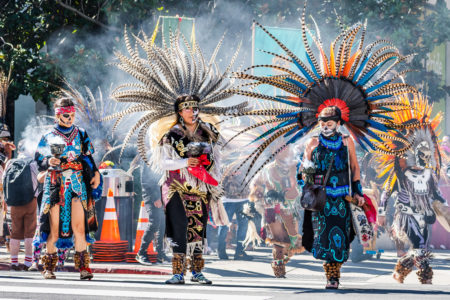 Their rituals and festivities celebrated the deaths of ancestors and honored the goddess Mictecacihuatl or “Lady of the Dead.”
Their rituals and festivities celebrated the deaths of ancestors and honored the goddess Mictecacihuatl or “Lady of the Dead.”
When Spanish colonists arrived in Mexico, they imposed Catholicism upon the indigenous people. As a result, the native people combined the Catholic traditions and beliefs with their own customs.
Día de Muertos came to be from a mixture of the Aztec festival dedicated to the goddess, Mictecacihuatl, with the Catholic influence.
The Catholic church dismissed the Aztecs’ beliefs and turned it into All Saints’ Day and All Souls’ Day, making it a two day celebration on the Catholic calendar.
Since, Mexicans have transformed it into a colorful and unique holiday practiced every year.
3. How is Día de los Muertos Celebrated Today?
To kick off the celebration, an elaborate ofrenda (altar) is built for the dead to commemorate their life and let them know that they are remembered and loved. The altar has pan de muerto—a traditional Mexican sweet bread commonly made during Día de los Muertos— and small portions of favorite foods and drinks of the deceased.
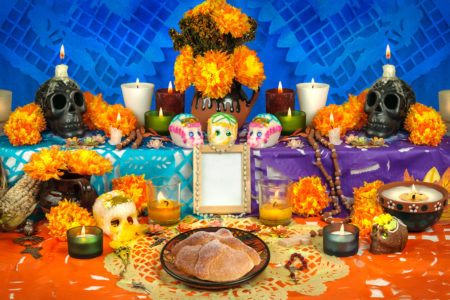 Things that can be seen at an ofrenda:
Things that can be seen at an ofrenda:
- Candles to light the way to the altar
- Container of water to refresh the soul from their long journey back
- Marigold flowers (cempasúchiles) to guide souls back to earth
- Small skeletons and decorated sugar skulls (calaveras) to depict who a person was
- Photos and possessions of the deceased
Additionally, there is festive music filled with joy and singing rather than crying and grieving. People paint their faces in the typical style of the Catrina skull—tall female skeleton wearing a fancy hat with feathers— and attend parades such as the Muertos Fest occurring in San Antonio on October 23-24, 2021.
“As our community has begun to enjoy public gatherings in a safe manner, Muertos Fest 2021 gives space and programming to reflect and observe all we’ve been through. We’re looking forward to gathering again for an in-person celebration of Día de los Muertos,” said Jim Mendiola, the Muertos Fest artistic director, according to a Yahoo! News report.
The movie CoCo introduced Día de los Muertos traditions to many generations with themes of loving and supporting your family and remembering those you’ve lost.
Coco also brought to light the impact of caregiving and dementia among Latinos.
Degenerative diseases like Alzheimer—a progressive disease, and most common form of dementia, that destroys memory and other important mental functions like thinking, speech and communication abilities—disproportionally affects the Latino community.
Latinos are 1.5 times more likely to develop Alzheimer’s disease than whites, according to a Salud America! report, which is why the new Alzheimer’s Disease Research Center at UT Health San Antonio and UT Rio Grande Valley is vital for the progression of Alzheimer’s research in South Texas.
4. How has COVID-19 Affected Día de los Muertos?
COVID-19 has deprived many families and friends from celebrating Día de los Muertos normally. Many of the scheduled parades for 2021 were either canceled or shifted to a virtual setting and even drive-through parades.
“We still need to do all the things we have within our power to protect our health and that of our family. That includes wearing a mask, even when around extended family… at least making sure we’re being safe at small get-togethers. That includes knowing what to do if we’re exposed to the virus or test positive,” said Dr. Amelie Ramirez, director of Salud America! and the Institute for Health Promotion Research at UT Health San Antonio, according to Texas Public Radio.
Staying safe from COVID-19 is important this holiday season, especially as the virus has had a disproportionate impact on Latino communities.
As of October 13, 2021, 17.7% of U.S. COVID-19 deaths are among Latinos, according to a new CDC data web page, “Health Disparities: Race and Hispanic Origin,” according to a Salud America! post.
5. What Can We Do to Help Latinos on Día de los Muertos and Beyond?
We can honor our loved ones, past and present, by promoting health equity.
One way you can help is to encourage confidence in the COVID-19 vaccine.
Share the Salud America! Latino COVID-19 Vaccine “Change of Heart” Bilingual Storytelling Campaign. The campaign shares the stories of real Latinos who overcame misinformation, got the vaccine, reconnected with family, and are helping end the pandemic.
Rosa Herrera is one of the Latinas who was unsure about the vaccine initially. She was worried it was produced too quickly and thought it would be unsafe. But after learning more about the vaccine, she decided to get it so she could safely spend time with her grandkids. Now she wants others to get vaccinated, too.
You can share Rosa’s story with your friends, family, and colleagues!
Another way to do your part for health equity is to help the Latinos who are facing inequities in our own communities.
Start by downloading your city’s Health Equity Report Card from Salud America!
This report card displays the resources your community has access to for healthcare, food, education, and other health equity related issues. You can help advocate for your neighbors and present the Health Equity Report Card to your city’s leadership!
GET YOUR HEALTH EQUITY REPORT CARD!
By The Numbers
142
Percent
Expected rise in Latino cancer cases in coming years

